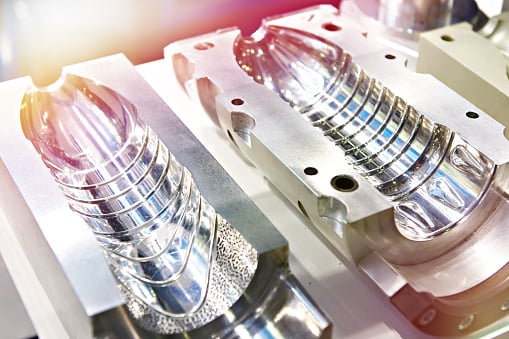How Do Injection Molds Work?
Stainless steel is frequently used to create injection molds, which are hollow structures into which molten plastic is injected to create the required part or product. They have central openings in the form of the component or finished good, known as mold cavities. The number of mold cavities, in addition to the shape of the cavity, might change depending on the variety of components or individual pieces that must be created throughout each cycle.
Family injection molds versus single-cavity versus multi-cavity molds
Single-cavity, multi-cavity, and family are the three main classifications for injection molds.
Molds for Single-Cavity Injection
A single product can be produced at a time using single-cavity injection molds, which have just one hollow. For production operations with low order volumes or items that are big or complex, they are an effective, affordable choice. Operators can pay closer attention to each individual product with single-cavity molds to check for air bubbles, empty mold spaces, or other potential faults. Compared to multi-cavity injection molds for the identical item, these molds are also less expensive.
Injection molds with several cavities
Multiple similar hollows make up multi-cavity injection molds. They make it possible for producers to simultaneously produce several goods by injecting molten plastic into all of the hollows at once. They provide shorter lead times for batches of products as a result, which improves manufacturing effectiveness, decreases delays, and lowers costs for large-volume or urgent orders.
Molds for family injection
Multi-cavity molds and family injection molds are extremely similar. Each hollow, however, is distinct rather than having numerous identical hollows. These molds can be used by manufacturers to create prototypes or various goods that are packaged together and marketed as a single variety pack. This kind of mold makes it easy to create several products from the same elastomeric material. The hollows must be precisely sized and positioned, though; otherwise, the fluid won't be injected uniformly and could lead to production issues.
Uses for Custom Injection Molds and Where to Find Them
Although there are numerous conventional injection molds available, not every project has a mold that is suitable. Custom injection molds are typically required when a company wants components or products that have:
- Strict standards: To create components that precisely fit the customer's needs and constraints, custom molds might be created. This is crucial for components and goods used in industries with strict regulations, such medical equipment or parts for aircraft.
- High standards for precision: Custom molds are created expressly to meet the product and production requirements of the customer, increasing the likelihood that the requested components will be produced to the required standards and quantities.
- Intricate designs: Custom molds can make more than just regular component designs. They can be used to create highly distinctive or complex parts and products since they can be adjusted to fit almost any component shape or size.
Important Elements for Mold Making Operations
Finding the ideal custom mold maker is crucial once you've determined that a custom mold is necessary for your injection molding project. Among the qualities to look for in a custom mold manufacturer are:
- good engineering and design skills
- superior materials for creating molds
- contemporary manufacturing tools
- the capacity for small tolerances
- respect for high standards
Project Case Studies at Rodon: Custom Plastic Injection Molding
The Rodon Group's injection molding specialists provide customers in a variety of industries high-quality tailored solutions.
Residential window hardware molds: For a replacement production option for residential window hardware, a customer in the door and window business turned to us. The production of lower-quality components was caused by the current tooling, which was nearing the end of its useful life. We re-engineered the parts for better performance, reliability, and moldability after evaluating the functionality and manufactureability of the original design. In order to manufacture a greater number of parts at a lower cost, we developed new, multi-cavity molds.
Molds for medical waste product caps: We were asked by a client in the healthcare sector to alter a special injection-molded cap for a waste product. The component could not be produced by the prior provider in a working state. Nevertheless, our team surmounted every project difficulty and produced molds to make the 200,000 needed caps.
Molds for polystyrene diagnostic kits: We were asked by a client in the medical field to design dies and offer injection molding services for polystyrene lateral flow in-vitro diagnostic test cartridges. We created and constructed long-lasting molds that resulted in high-quality items that were lighter and less expensive.
For the best services, get in touch with Rex Technology.

